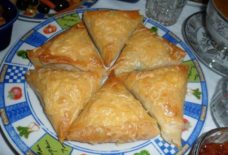Next Week Pope Francis Will Visit the Ancient Mesopotamian City of Ur in Iraq to Offer an Interfaith Prayer
By: Claire Boyle/Arab America Contributing Writer
Introduction:
The Vatican recently announced that Pope Francis will be traveling to the ancient Mesopotamian city of Ur in modern-day Iraq to offer a prayer in the hopes of pursuing interfaith dialogue between Iraqi Christians, Muslims, and other religious minorities in the country. Why is this important? Well, for one thing, Pope Francis will be going to the important archaeological and historical site of the Great Ziggurat of Ur which was a pyramid in Mesopotamia. Additionally, Francis’s visit will also highlight the religious significance of the ancient city of Ur which was the birthplace of the Christian and Islamic prophet, Abraham due to the fact that both faiths trace their lineage to him. Finally, local historians and archaeologists hope that his visit will highlight the difficulties surrounding tourism that Iraq has faced over the years due to political instability and the ongoing coronavirus crisis which has all but dried up any visitors to this historic site.
How Will the Pope Engage Iraq During his Visit?
The pope plans to have a busy schedule which will include celebrating masses in Baghdad with the Chaldeans and Syro-Catholics, and then he will proceed to visit with underrepresented communities such as the Qaraqosh and Kurds. He also plans to meet with government officials and members of the [Iraqi] Diplomatic Corps. Finally, the two most important events on his trip include meeting with the Grand Ayatollah Sayyid Ali Al-Husayni Al-Sistani, a highly-influential Shia cleric in the Arab World, and interreligious dialogue with leaders at the Plain of Ur near the ziggurat.
Historical Significance of the Pope’s Visit to Iraq:
Pope Francis will make history as the first Catholic pope to visit the country of Iraq. The pope’s decision to hold interfaith prayers at the Ziggurat located in the ancient city of Ur also holds a special meaning because he recognizes the historical importance of this religious landmark. In ancient times, this ziggurat served as a religious center as it was part of a temple complex. Furthermore, the Great Ziggurat at Ur was originally built in the twenty-first century BCE by King Ur-Nammu who used it as a religious site. Later on, Ur became the birthplace of Abraham the Prophet (Ibrahim in Islam), and both Christians and Muslims trace their separate religious lineages through his two sons, borne of different mothers. In this context, the origins of Christianity can be found through the line of Sarah and Isaac, and the Islamic heritage is from Hajar and her son, Ishmael.
Additionally, the pope has made interreligious dialogue a main focus of his administration ever since he was selected to lead the Roman Catholic Church in 2013. Pope Francis has talked many times about the need for interfaith dialogue especially as our world gets smaller due to migration which allows us to “foster [greater] respect and friendship” between cultures. Finally, his visit recognizes the numerous struggles that Iraqis have faced over the years due to governmental instability, nonstate actors like ISIS, and due to his international influence, he represents a sense of hope and rebirth for the people of Iraq.
Religious Importance of Pope Francis’s Visit:
The religious impact of Pope Francis’s visit is very wide-ranging given that his presence will bring multiple faith groups, political leaders, and other important individuals together who are all searching for the same thing which is peace. Additionally, by visiting Iraq and offering an interfaith prayer, the pope is providing a bridge between Christianity and Islam as well as recognizing the two religions’ similarities as opposed to only searching for our differences. Furthermore, the pope will serve as a representative for the minority Arab Christian population in Iraq that includes the Chaldeans, Assyrians, Syriac Orthodox, and those in the Eastern Orthodox rite in the Arab World, and among others.
How will the pope’s visit impact Iraq in the future?
What kind of influence will the pope’s visit have on Iraq going forward? Well, currently that is unknown, but local historians and especially archaeologists who work at the Great Ziggurat of Ur hope that Francis’s site visit will bring a sense of urgency of “the need for resources that will provide funding to complete restoration projects on its palaces and temples.” Furthermore, it is essential to point out that Muslims are excited about the pope coming to Iraq, too, because it “reflects the reality of relations between religions in Iraq” in that someday there may be a country without sectarianism. Finally, Pope Francis’s tour of Iraq, especially that of the ziggurat, may bring about a renewed interest in ancient history and artifacts, religious and cultural studies, and of course, the ever-powerful, interreligious dialogue.
Conclusion:
In conclusion, Pope Francis’s trip to Iraq will bring great hope and excitement for the country, especially one that is still recovering from years of conflict. Additionally, he will be a representative for numerous communities including Arab Christians, Muslims, and other religious minorities in Iraq. Finally, Pope Francis’s visit will focus on religious harmony through a lens of interfaith prayer when all the celebrants come together to pray at the beautiful Great Ziggurat of Ur in Iraq.
Check out Arab America’s blog here!








